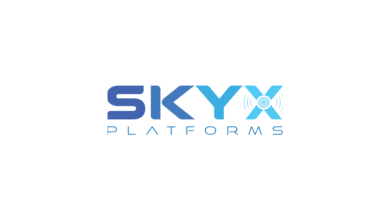Stock Market Today: Nasdaq and S&P 500 Rise as Google Surges Following Favorable Antitrust Ruling

U.S. stocks traded higher on Wednesday, with technology stocks leading the way after a favorable antitrust ruling for Google and a softer-than-expected jobs update. The Nasdaq Composite (IXIC) gained 0.8%, rebounding nearly 170 points, while the S&P 500 (GSPC) added 0.4%. Meanwhile, the Dow Jones Industrial Average (DJI) edged 0.3% lower, weighed down by a lack of tech exposure compared with the Nasdaq.
Investors welcomed the news that Google would not be required to sell its Chrome browser or limit its default search arrangements, easing regulatory uncertainty for one of the most influential tech companies in the market. Additionally, a slower pace of job openings has reignited expectations for potential Federal Reserve rate cuts.
Market Movers:
- Alphabet (GOOG, GOOGL) +8.8%: Google surged after a court decision allowed it to keep key business arrangements with Apple, including its position as the default search engine on Safari and Siri. The ruling removed a cloud of regulatory risk, boosting investor confidence and driving Alphabet’s stock sharply higher. Analysts say the outcome solidifies Google’s dominance in search and digital advertising, which has been a key revenue driver for the company.
- Apple (AAPL) +2.1%: Apple saw modest gains as the Google ruling reinforced its lucrative partnership revenue from search agreements. Investors also digested the company’s continued momentum in services and device sales, with the regulatory clarity providing additional upside potential. Some strategists note that Apple’s exposure to ad revenue from Google helps cushion earnings volatility amid a changing macroeconomic environment.
- Amazon (AMZN) +1.5%: Amazon edged higher, boosted by the overall tech rally and optimism about e-commerce and cloud computing demand. Investors focused on Amazon Web Services’ continued revenue growth as a driver of operating margin improvement. Analysts also highlighted Amazon’s ongoing international expansion and AI integration as factors supporting long-term growth potential.
- Microsoft (MSFT) +1.2%: Microsoft gained alongside broader tech indexes as investors reassessed risk in high-growth tech names. The stock benefited from renewed rate-cut expectations, which could lower borrowing costs and support enterprise tech spending. Analysts note that continued demand for cloud services and AI initiatives underpins the company’s strong earnings visibility.
Fed Rate Expectations and Labor Market Impact
The labor market remains a focal point for investors this week. Job openings for August came in below expectations, suggesting slower hiring growth, which has boosted hopes that the Federal Reserve could pivot toward interest rate cuts soon. Lower rates would reduce financing costs for businesses and consumers, potentially fueling a rebound in investment and spending.
The market reaction reflects sensitivity to economic data, particularly in a month historically known for seasonal weakness in equity markets. Investors are closely watching payrolls and wage growth figures, which could significantly influence future monetary policy decisions.
Tech Sector Resilience
Tech stocks led the gains, driven by both regulatory clarity and ongoing optimism around AI adoption. Google, Microsoft, and Amazon saw strong buying interest as investors assessed the potential for sustained revenue growth despite a slowing macro backdrop. Analysts note that tech-heavy indices often outperform during periods when rate-cut expectations rise, providing a favorable environment for growth-oriented equities.
Looking Ahead
Markets now turn their attention to the upcoming jobs report and additional economic indicators, which will likely set the tone for the Fed’s next policy decisions. Investors will also be monitoring earnings updates from major tech companies and any developments in antitrust and regulatory actions, as these factors could continue to drive volatility. With September historically volatile, market participants are expected to remain focused on both macroeconomic data and sector-specific catalysts.




